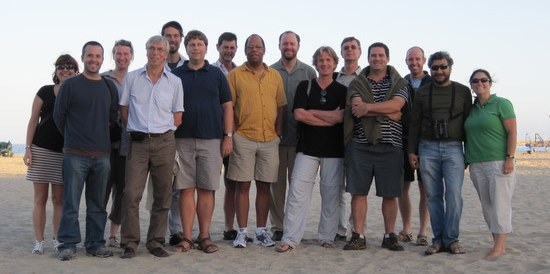Comparative Urban Ecology
Comparative ecology of cities: What makes an urban biota "urban"?
The rapid urbanization of the world has profound effects on global biodiversity and urbanization has been counted among the processes contributing to the homogenization of the world’s biota. However, there are few generalities of the patterns and drivers of urban biota and even fewer global comparative studies. A comparative approach of urban biota is needed to produce comparable methodologies to understand, preserve, and monitor biodiversity in cities.
We propose an NCEAS working group involving researchers from cities worldwide to develop synthesis of urban ecology. We ask the overarching question: “What makes an urban biota ‘urban’?” and with that, “Are the patterns of urban biota and the processes that shape them the same across the world’s cities?” We have identified several factors that may serve as filters determining species distributions.
We propose a hierarchical series of filters: 1) regional scale biogeographic context, 2) metropolitan scale urban intensification, and 3) local scale socio-economic/cultural factors. We will use plants and birds as independent datasets for addressing these broad questions. There is a newly matured wealth of existing urban bird and plant datasets for cities of different sizes, ages, and cultural and development patterns such as Baltimore, Berlin, Jalisco, New York City, Phoenix, Potchefstroom, and Stockholm, among others. We propose to bring datasets together, using commonly available data (e.g. land cover layers, national censuses, life history databases) to synthesize the urban biota. Outcomes from these proposed extensive comparative analyses will not only help to push forward the frontiers of transdisciplinarity in ecology, but will also provide useful information for planners and managers.
Within the project, three workshops were held at the University of California, Santa Barbara, USA. The workshops were funded by the National Center for Ecological Analysis and Synthesis (NCEAS).
NCEAS workshop on Comparative Urban Ecology

Selected publications:
| 2018 | La Sorte, F., Lepczyk, C., Aronson, M., Goddard, M., Katti, M., MacGregor-Fors, I., Mörtberg, U., Nilon, C., Warren, P., Nicholas, W., Yang, J., 2018. . Diversity and Distributions 24: 928-938. |
| 2014 | Aronson et al. 2014. A global analysis of the impacts of urbanization on bird and plant diversity reveals key anthropogenic drivers . Proceedings of the Royal Society B 281: 20133330. |
| 2014 | N.A. 2014. Ecology: City birds and plants in decline . Nature 508, page 11. |
| 2011 | Hedblom, M. & Mörtberg, U. 2011. Characterizing biodiversity in urban areas using remote sensing . Chapter 20 in: Yang, X. (ed.) Urban Remote Sensing: Monitoring, Synthesis and Modeling in the Urban Environment. John Wiley & Sons, Chichester, UK: 287-304. |
